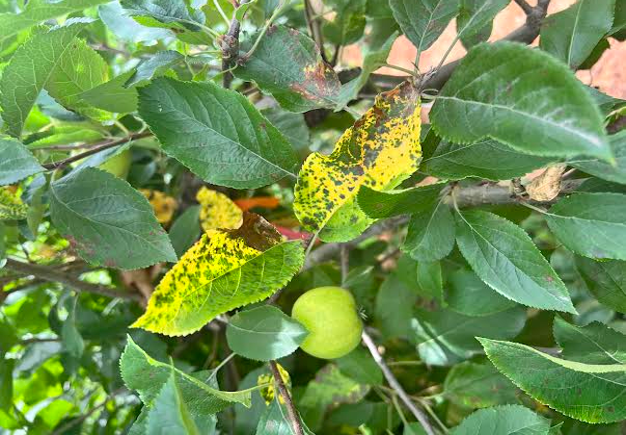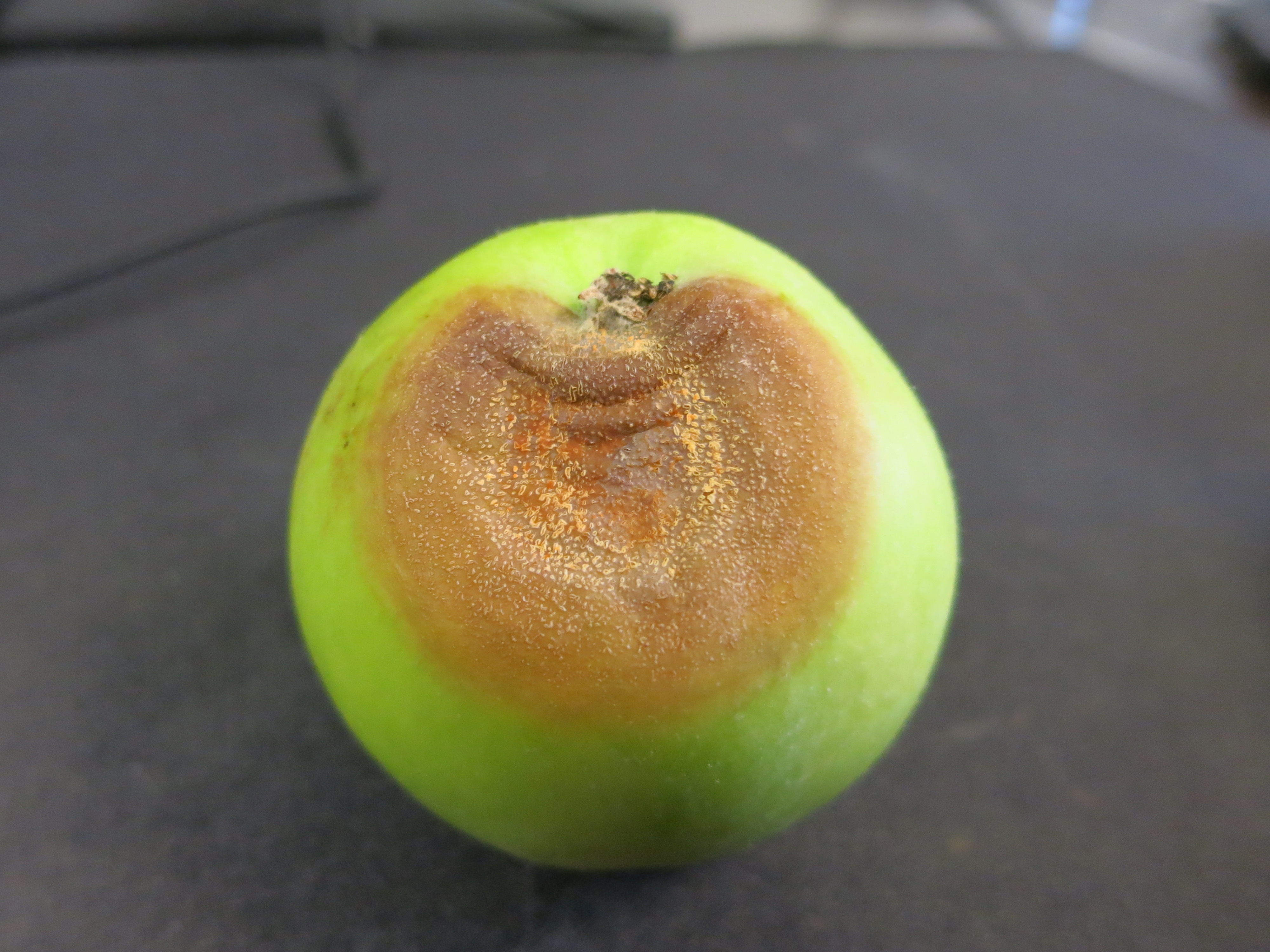Apple Disease Update: Week of July 13, 2025
go.ncsu.edu/readext?1082263
en Español / em Português
El inglés es el idioma de control de esta página. En la medida en que haya algún conflicto entre la traducción al inglés y la traducción, el inglés prevalece.
Al hacer clic en el enlace de traducción se activa un servicio de traducción gratuito para convertir la página al español. Al igual que con cualquier traducción por Internet, la conversión no es sensible al contexto y puede que no traduzca el texto en su significado original. NC State Extension no garantiza la exactitud del texto traducido. Por favor, tenga en cuenta que algunas aplicaciones y/o servicios pueden no funcionar como se espera cuando se traducen.
Português
Inglês é o idioma de controle desta página. Na medida que haja algum conflito entre o texto original em Inglês e a tradução, o Inglês prevalece.
Ao clicar no link de tradução, um serviço gratuito de tradução será ativado para converter a página para o Português. Como em qualquer tradução pela internet, a conversão não é sensivel ao contexto e pode não ocorrer a tradução para o significado orginal. O serviço de Extensão da Carolina do Norte (NC State Extension) não garante a exatidão do texto traduzido. Por favor, observe que algumas funções ou serviços podem não funcionar como esperado após a tradução.
English
English is the controlling language of this page. To the extent there is any conflict between the English text and the translation, English controls.
Clicking on the translation link activates a free translation service to convert the page to Spanish. As with any Internet translation, the conversion is not context-sensitive and may not translate the text to its original meaning. NC State Extension does not guarantee the accuracy of the translated text. Please note that some applications and/or services may not function as expected when translated.
Collapse ▲ Another warm, humid, and in many areas wet couple of days. Although I wrote a post last week, it doesn’t seem like the system automatically sent it out to those registered to receive updates. There was some good information in the post regarding PHIs and locally systemic fungicide selection, which is still relevant for this week.
Another warm, humid, and in many areas wet couple of days. Although I wrote a post last week, it doesn’t seem like the system automatically sent it out to those registered to receive updates. There was some good information in the post regarding PHIs and locally systemic fungicide selection, which is still relevant for this week.
In scouting my orchards last week, I didn’t observe anything “new” in regards to diseases popping but, it incidence and disease severity was certainly increasing in our research blocks. Treatments in our Marssonina leaf blotch trial are beginning to display differences. While the Captan 80WDG treatment has been providing ok control, treatments including the DMI fungicides Cevya and difenoconazole (Inspire Super) as well as the SDHI fungicide, Tesaris, continue the multi-year trend of showing the greatest efficacy against MLB. We have included Omega and Axios (UPL) this year, and will provide early results this week or next. While the fungus causing MLB can cause disease on fruit, we have not frequently observed fruit symptoms in NC. On highly susceptible cultivars such as ‘Rome Beauty’, premature defoliation due to MLB should be a concern as this can lead to:
- Compromised photosynthesis leading to poorer fruit quality
- Decreased cold hardiness and possible colonization and symptom expression of trunk and limb pathogens such as Botryosphaeria
- Sunburn on fruit
In our ‘Rome Beauty’ research orchard where there’s lots of inoculum, fungicide applications every two weeks with a rotation of Captan 80 WDG (2.5-3 lbs per acre) with Captan 80WDG (2.5 lb/A) + one of the fungicides mentioned above has resulted in excellent control.
In addition to MLB, keep in mind that symptoms of GLS and bitter rot are becoming fairly severe in orchards with sub-optimal control or where fungicide applications have failed. In the case of Glomerella leaf spot, ascospores are commonly produced on lesions, particularly once leaves have fallen. These spores can be be wind dispersed over long distances. This differs from the orange masses of conidia (spores) that are often observed on fruit which are frequently splash dispersed. If you see fruit on the ground or in the tree with bitter rot infection, I’d highly recommend removing them from the orchard and destroying. I know some growers will bury them outside of the orchard, which should also be fine.
 It’s important to keep in mind that GLS and bitter rot infection can still occur without rain. Under ideal temperatures, infection may require less than 3 leaf wetting hours (LWH). In some locations in Henderson County, NC, 7 of 13 days so far in July have exceeded the approx. 3 hr leaf wetting requirement. That said, it’s important to maintain fungicide applications on 7 to 10 day intervals.
It’s important to keep in mind that GLS and bitter rot infection can still occur without rain. Under ideal temperatures, infection may require less than 3 leaf wetting hours (LWH). In some locations in Henderson County, NC, 7 of 13 days so far in July have exceeded the approx. 3 hr leaf wetting requirement. That said, it’s important to maintain fungicide applications on 7 to 10 day intervals.
Lastly, some important fungicide preharvest intervals that may be approaching on some cultivars:
- Omega: 28 days
- Aprovia: 30 days


